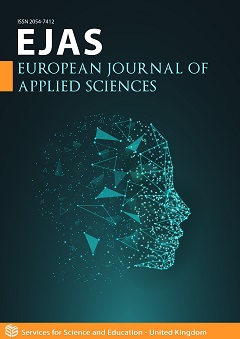Design of New N-Salicylidene Alanine Transition Metal Schiff-Base Complexes with Zn(II), Mn(II), Fe(II), and Fe(III): Synthesis, Characterization, Toxicity, and Computational Studies of the Potential Metal-Ligand Binding Sites
DOI:
https://doi.org/10.14738/aivp.114.15168Keywords:
Design, Synthesis, N-Salicylidene Alanine, Density functional Theory, ToxicityAbstract
We have proposed the structures and potential metal-ligand binding sites of four N-Salicylidene alanine transition metal Schiff-base complexes with Zn(II), Mn(II), Fe(II) and Fe(III) using both experimental and computational methods. Different models of the structures were fully optimized and analyzed using density functional theory (DFT) B3LYP method and the binding modes revealed that models 4a, 5c, 6c, and 7f correspond to complexes I, II, III, and IV respectively. The geometry adopted are tetrahedral, trigonal bipyramidal, octahedral, and octahedral respectively for complexes I, II, III, and IV. Characterization of the complexes were done using melting point/decomposition temperatures, solubility test, FT-IR and UV-visible spectroscopy. All the complexes were seen to have a different melting point from the amino acid; alanine, which was used in the synthesis. The complexes were soluble in water and most polar solvents, which is important for intended use in biological systems as drugs. In addition, the experimental and calculated IR spectra of the complexes revealed prominent stretching frequencies including the -C=N- imine group that are similar within 5-10 % margin to the most stable structures 4a, 5c, 6c, and 7f. Furthermore, the UV-visible studies of complex I showed three prominent electronic transitions, two prominent transitions for complex II, three prominent transitions for complex III and three prominent transitions for complex IV in both the experimental and computational model structures. These electronic transitions were assigned to the π π* and HOMO-1 LUMO+2, HOMO-4 LUMO, HOMO LUMO for complex I, π π* and HOMO-5 LUMO-5, HOMO LUMO+1 form complex II, 2T2g 2Eg, π π* and HOMO-2 LUMO+1, and HOMO LUMO+1 for complex III, π π* and HOMO-3 LUMO+1, HOMO-3 LUMO for complex IV. The complexes were non-toxic towards prokaryotic gram positive (Staphylococcus aureus, Staphylococcus epidermis, Streptococcus mutants) and gram negative (Aquaspirillum serpens Escherichia coli) bacterial and eukaryotic (Saccharomyces cerevisiae) bacterial.
Downloads
Published
How to Cite
Issue
Section
License
Copyright (c) 2023 James Tembei Titah, Liang Yang, Tara Sheets, Hua Jun Fan, Josh Daniel McLoud, Coulibaly Wacothon Karime, Tobias Stewart

This work is licensed under a Creative Commons Attribution 4.0 International License.






